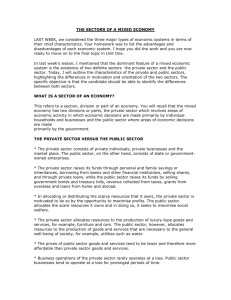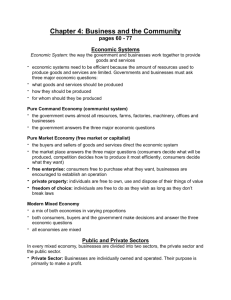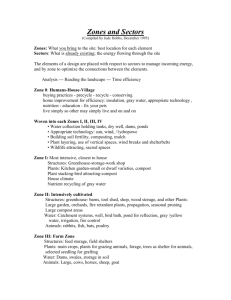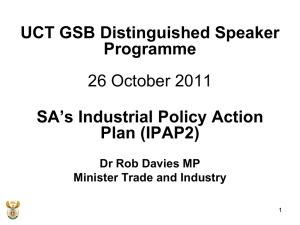Unit 1.1 * Nature of Business Activity
advertisement
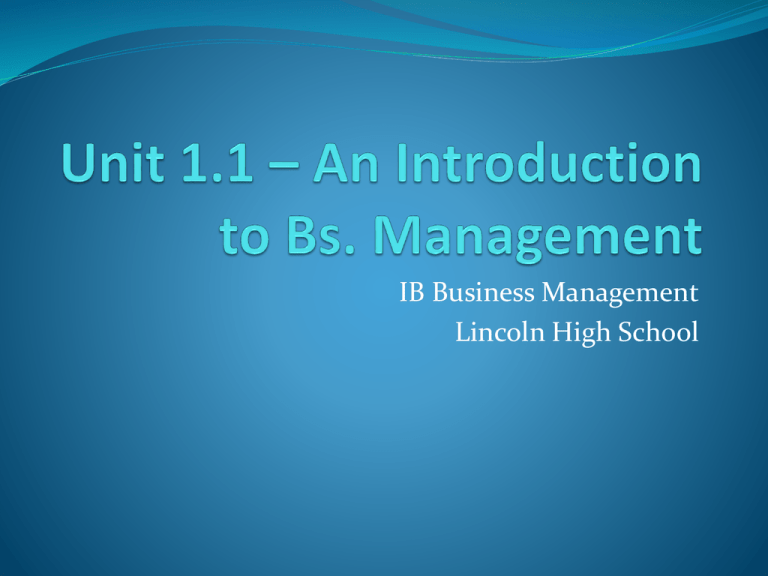
IB Business Management Lincoln High School Goals of this chapter Look at the production of goods & services; needs v. wants Explore business functions – HR, finance, marketing, operations Explain the nature of business activity in sectors. Explore entrepreneurship and the process of starting a business Outline the elements of a business plan Explore options a start-up business may face For each unit, Discussion of main points. Student workpoints presented – most will be discussed, some will be written. Key Terms should be familiar Practice question at end of chapter will be completed and submitted. Definition of a Business Why does a business exist???? An organization involved in the production of goods and/or services Businesses exist to satisfy needs and wants Needs – basic necessities someone must have Wants – things people would like to have Summary of Business Activity Inputs – Human, Physical, Financial, Enterprise (least tangible) These inputs are PROCESSED to add value Outputs Goods and Services Production Capital v. Labor Intensive Products Goods – tangible; Services - intangible Think About it? Is an organization that doesn’t have as it’s goal to make money still a business? Examples, YMCA, churches, charities? Business Functions/Departments Operations Management or Production Marketing Product Price Promotion Place Finance and Accounts Human Resources (HR) Connections How are the four departments connected? Question #1 Working together – Explain how the introduction of a new product line can impact all of the four departments. Business Sectors Goods Primary Sectors Extraction, harvesting and conversion of land Secondary Sector Processing raw materials for manufacturing of goods. Many forms – consumer goods, capital goods. Services Tertiary – all services Quaternary – services focused on knowledge All linked in the “chain of production” Student workpoint 1.1 Everyday products – imagine their “chain of production” A cherry pie you purchase A skateboard A cellphone Chain of Production Steps through the different sectors to turn raw materials into consumer goods Business Growth Horizontal Growth Two businesses merge Backwards vertical integration Forward vertical integration Backwards Vertical Horizontal Integration Forwards Vertical Horizontal Role of profit in Bs. Activity Profit = Positive difference between revenue and cost Loss – if expenses (Costs) are greater than revenue Role of profit Incentive to produce; reward for risk takers Encourages invention and innovation Acts as an indicator of growth Source of finance Sectoral Change Size of each sector may change Number of people employed in each area Social technologies The more advanced a sector is, the more complex the needs are: Example – some sectors need higher skilled workers Size of Sectors correlated to economic development of a country. Graphs page 9 Shifting of sectors can put a strain on resources. Entrepreneurs / Intrapreneurs Entrepreneurs – self-employed business owners Intrapreneurs – Employed by large organizations to develop products or services Balance risk of failure against likelihood of success Innovation New technology Social Changes Reasons for Starting a Business Rewards Independence Necessity Challenge Interest Finding a Gap Sharing an Idea Process of Starting a Business You need: A Business Idea A Plan Organizing the Basics Researching the Market Pages 11-13 Planning the Business Establishing Legal Requirements Raising the Finance Testing the Market Problems a Business May Face What percent of small businesses fail in the first year After 4 or 5 years? Possible problems – Table 1.1.4 Student Workpoint – page 12 Work with your row – 4 different businesses. Create a plan, answer the following questions: Where will you locate your business? Who is your target market? How will you conduct market research? What will be your “unique selling point” Where do you think you can obtain financing? This is just a brainstorm! Elements of a Business Plan Business Idea, Aims, Objectives Business Organization HR Finance Marketing Operations Table 1.1.5 Concepts you need to know: Page 16 – Table 1.1.5 Revision Checklist Assignment – Ch. 1 Question #2 - “A friend is considering going into business for themselves. What detailed advice can you give them to hopefully ensure their success?” 10 marks


